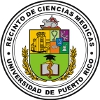Background
In December 1999 the Surgeon General’s Report on Mental Health led to the development of a National Action Agenda for addressing the mental health needs of children. Since then, serious concerns have been raised about the significant gap in systematic research around the development of psychiatric problems in the very young. This necessarily involves 1) establishing the prevalence of psychiatric disorders in young children, 2) examining the influence of genetic and environmental factors on early problem behaviors, and 3) studying gene-environment interplay in the development of preschool psychiatric disorders. Understanding these mechanisms has important implications for how we conceive of the role of genetic factors in behavioral development because they point to a much more extended pathway between events at the molecular level and behavioral outcomes than is sometimes appreciated. Furthermore, in so far as the effects of genes are mediated through potentially modifiable interplay with the social environment, it is likely that environmentally based attempts to reduce risk may prove to be more effective than might otherwise be implied by apparently large contributions of genetic factors.
Preliminary studies of data on infant twins in Puerto Rico have shown significant “shared environmental effects”, not found in previously in other population studies. It has long been recognized that estimates of the shared environment in twin studies may not be “environmental” but may also reflect the effects of genetic stratification of the population. This means that some genetic differences between families are confounded with the true effects of the family environment. Until now, there has not been a direct way of resolving the effects of stratification from true effects of the family environment as they relate child health and development. Because Puerto Rico is ethnically heterogeneous we propose to collect DNA samples from both mothers and fathers via a saliva sample to characterize the ethnic admixture of individuals in this heterogeneous population. Both mainland and island Puerto Ricans as well as mainland Latinos represent the ethnic group with the highest asthma prevalence (Beckett et al. 1996) morbidity and mortality (Caraballo et al., 2004) and poorest therapeutic response (Gonzalez-Burchard et al., 2004). The literature points to several possible explanations for Latino children’s excess asthma burden. These factors include genetic influences, environment triggers, comorbid psychiatric problems in children and caregivers, and disparities in health care use.
AIMS
IGADI is a large population-based study on infant identical and non-identical male and female twins. The numbers were obtained from the Puerto Rican Neonatal Twin Registry (PRNTR) to ascertain an additional birth cohort (born in 2006) and compare it to twins born in 2002.
- Aim 1: Evaluate asthma risk and allergies in the infant twins and their parents.
- Aim 2: Assess a number of putative psychosocial and environmental risk factors (e.g., parental and child psychopathology, etc.).
- Aim 3: Analyze DNA samples on parents to study the influence of genetic admixture on asthma risk.
Funding Acknowledgement
NIH-1R01HD049 and RCMII: Clinical Research Center
Investigators
- Judy L. Silberg, Ph.D – Principal Investigator
- Glorisa Canino, Ph.D. – Co-Principal Investigator
Questionnaires
Diagnostic Interview Schedule for Young-Children (YC-DISC)
a. [Social Phobia; Separation anxiety; Generalized anxiety; Mood disorder (Major Depression and Dysthymic Disorder) Attention-Deficit Hyperactivity Disorder; Oppositional Defiant disorder; and Conduct Disorder].
Home interview- parental/adult primary caretaker ratings of twins’ early health and development (including asthma and allergies) and aspect of the home/family environment.
- Children’s Global Assessment Scale (C-GAS)
- Family Functioning APGAR
- Children’s Behavior Questionnaire
- The Children’s Behavior Questionnaire (CBQ)
- Sensation seeking scale for children
- Spanish BASIS-24®
- Parenting Stress Index-Short Form (PS-SF)
- Rutter Preschool A Scale
- The Conflict Tactics (CT) Scales.
- Parker Bonding Scale
- Social Networks
- Neighborhood Characteristics
- Children’s Global Assessment Scale (C-GAS)
Other Measures
DNA from a saliva sample (parent and children)
